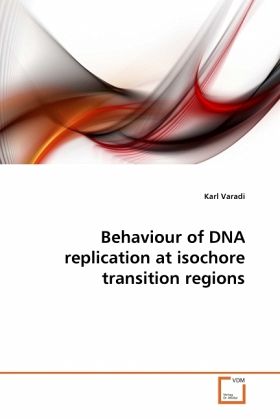
Behaviour of DNA replication at isochore transition regions
Versandkostenfrei!
Versandfertig in 6-10 Tagen
39,99 €
inkl. MwSt.

PAYBACK Punkte
20 °P sammeln!
The investigation of the mammalian genome revealed an organization in distinct domains of different GC-content termed isochores, which are separated by sharp boundaries. Isochores reflect the chromosomal banding pattern and are correlated with various functional features, for instance recombination frequency, gene density, distribution of repetitive elements and DNA replication timing. GC-rich sequences replicate early and GC-poor sequences replicate late during the S-phase. This study was carried out to reveal the behaviour of the replication mechanism at the isochore transition region within...
The investigation of the mammalian genome revealed an organization in distinct domains of different GC-content termed isochores, which are separated by sharp boundaries. Isochores reflect the chromosomal banding pattern and are correlated with various functional features, for instance recombination frequency, gene density, distribution of repetitive elements and DNA replication timing. GC-rich sequences replicate early and GC-poor sequences replicate late during the S-phase. This study was carried out to reveal the behaviour of the replication mechanism at the isochore transition region within a sequence on the human chromosome 22q12.1 in HeLa cells. The book is addressed to interested readers with basic knowledge on molecular biology who want to learn more about the replication process of human DNA sequences.












